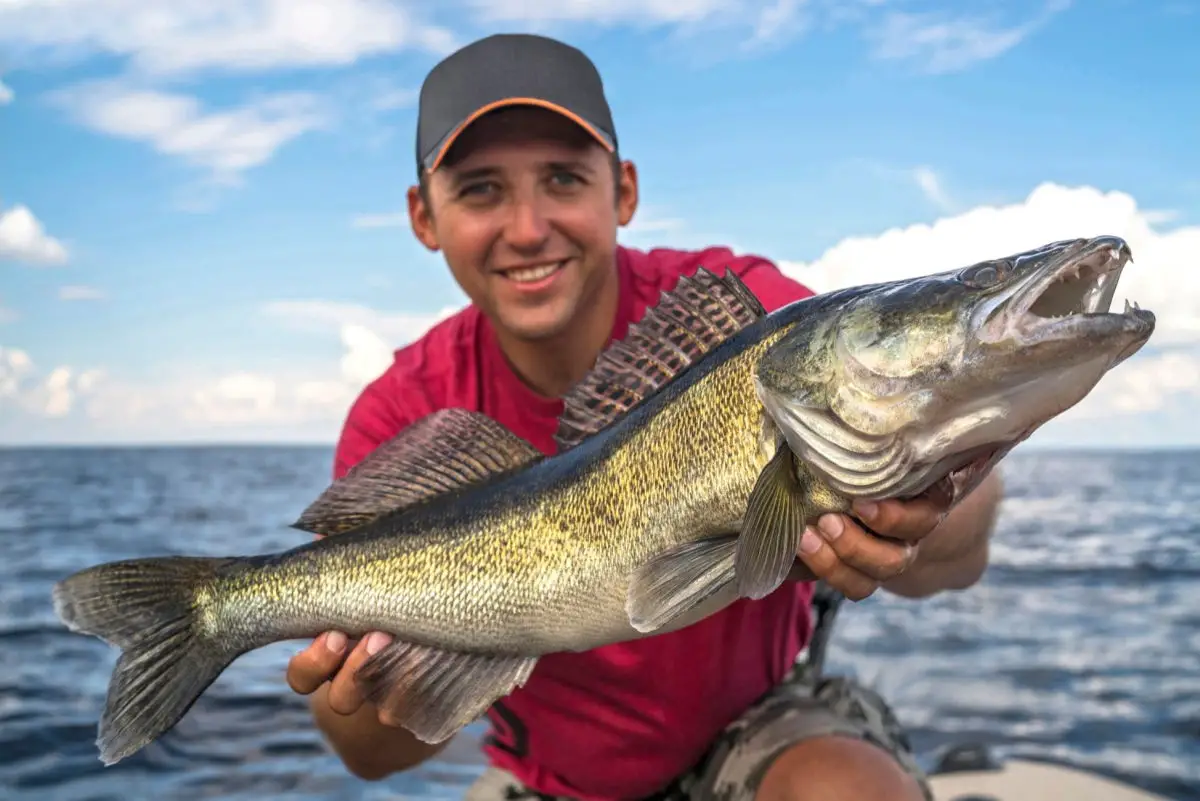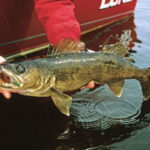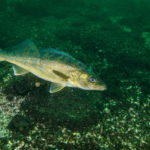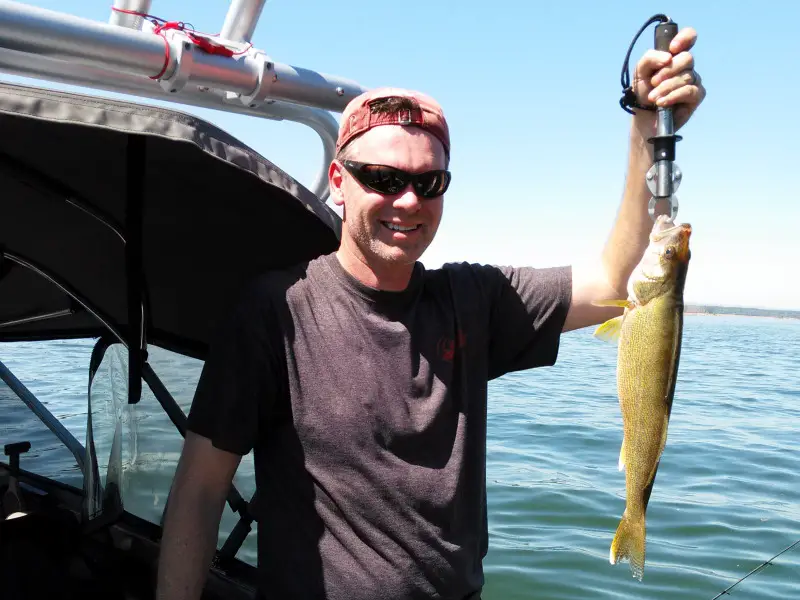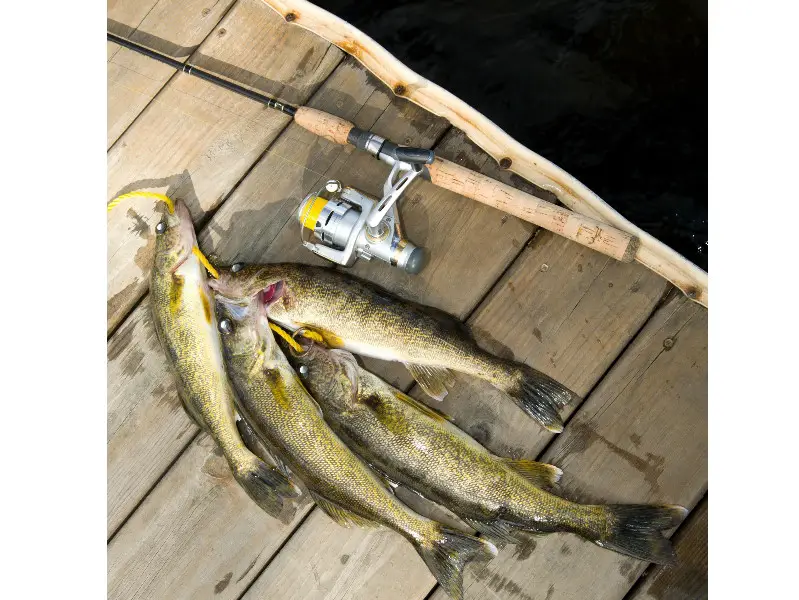We have frequently heard stories of river monsters and huge lake fish that could put Godzilla to shame. These creatures can often be huge versions of normal fish that we are used to seeing small, such as perch or catfish. This then opens the question, “How big can walleye get?”
On average, walleye can get up to 36” (9 cm) in length and weigh about 20 lb. (10kg). The largest walleye ever recorded measured 42″ (107 cm) and weighed 25 lb. (11.3 kg). Walleye come in various sizes and continue growing as they age. Their habitats and food availability can also affect their size.
These sizes are absolutely massive, especially when you consider the average sizes for caught walleye. Read on to learn more about average walleye sizes, maximum walleye records, and how these metrics affect your ability to fish for them.
What Is the World Record Largest Walleye?
Bodies of water are places of mystery. We don’t know what could be lurking underneath the waters. We often judge an entire lake or river based on the small percentage of fish that we can catch from it, but does that account for everything that could be in the water?
Most scientists agree that we haven’t mapped or seen at least 80% of the ocean. Does this also trickle into other bodies of water, such as rivers and lakes?
If you like fishing, chances are you’ve watched the show “River Monsters,” where the host Jeremy Wade hunts for big fish. It’s amazing how big these fishes can get! Did you know that one of the largest fish caught and recorded was a walleye?
The world record walleye caught was 42 inches (107 cm) and 25 pounds (11.3 kg). Since walleye can grow bigger the longer they live, one may assume that a larger and heavier walleye is still out there lurking in the waters. Their habitat and living years in the wild significantly impact their size.
Story of the Current World Record
Mabry Harper caught the current world record walleye. It stands as the record since it is the most well-documented/supported claim, with multiple pieces of evidence to back it up. She set this record in 1960 at the Old Hickory Reservoir in Tennessee.
Do Different Types of Walleye Grow to a Different Size?
There isn’t a specific type of walleye that can grow bigger than another. All walleye are the same species, and they can grow to various sizes depending on their habitat and age. Not all will become large, but suitable habitats and consistent food availability heavily impact their growth potential.
Does Walleye Size Depend on the Location?
A walleye’s size can depend on the location because the habitat plays a significant role in the fish’s health and longevity. A walleye’s surroundings determine its access to food, and an environment with fewer predators means it can continue to age and grow.
Walleye mainly vary in size due to biological reasons, such as food availability. As far as data of the largest caught walleye suggest, there is no real set location for where walleye can grow the largest.
This points scientists to the belief that other factors, such as how widespread their habitat is and how much food is available, are the largest effectors on how big walleye can get.
Where Are All of the Biggest Walleyes Located?
While it would be easy to pinpoint a single location where walleye are the largest, it seems to be vaguer than that.
The biggest walleyes have been caught in the U.S., and these locations include:
- Columbia River, Washington — 19 pounds (8.6 kg)
- Lake Cumberland, Kentucky — 21 pounds, 8 oz (9.75 kg)
- Greers Ferry Lake, Arkansas — 22 pounds, 11 oz (10.3 kg)
It may seem as though the largest walleye are all located in the South, but there are other pockets, such as the Columbia River, where comparably large walleye can also be found. This leads many to believe that walleye size also depends on factors like temperature, food availability, competition, etc.
Does Age Affect How Big a Walleye Can Get?
We know that a wild walleye’s habitat can affect its size. But does the fish’s age affect its size?
Age affects how big a walleye can get because the longer it lives, the more it will continue to grow. So if you’ve caught a huge walleye, chances are, it is a few years old.
On average, this fish can live up to 10 years.
Maximum Age of the Walleye
The maximum age of any known walleye was 29 years. This is higher than the average. This walleye also happened to be larger than average, showing that older walleye tend to be larger and heavier than smaller ones.
Correlation Between Walleye Age and Size
As animals age, it is natural for them to grow both in size and weight. Most walleye reach peak maturity (adulthood) around 3 years of age. This size is the “blueprint” for what adult walleye should be to survive and reproduce.
This, however, can be affected, as the size of a walleye can increase the longer it can stay alive and eat prey (especially if it has access to lots of prey).
Other Factors Influencing Walleye Size
As touched upon, age or location are certainly not the only factors influencing the size that a walleye can reach. In fact, these are often some of the smallest factors, while other ones such as food availability can severely impact the size possibility of walleye.
Now let’s explore how factors like food availability, competition, and temperature can influence the size of walleye.
Walleye Thrive in Size When Food Is Abundant
So we’ve mentioned that food availability has a large effect on walleye size, but why is that so? The reason is the more food an animal can eat, the larger it can grow (as thus it has taken in more calories and nutrients that allow it to build more tissue).
With this, having more available food (such as large populations of small fish or more open areas) can allow walleye to grow much larger.
Less Competition Allows Walleye To Grow
As with any animal, competition is also a major factor in size. This simplifies down how much food in an area can be split among many animals. For example, if small prey was abundant and there were only 2 or 3 larger walleye in the area, those walleye could grow larger as they are fighting with fewer other predators for the food supply.
Higher Temperatures Can Increase Walleye Size
This factor is currently being studied, so it is still up in the air how much effect this has on walleye size. Either way, according to studies, such as ones republished on In-Fisherman, increased temperatures have shown a role in increasing the size of walleye in a given area.
These increased temperatures are currently often attributed to climate change and the heating of specific areas such as the Southern portions of the United States of America.
Can You Fish for Walleye?
You can fish for walleye if the location you’re based in allows for it. Even if a species of fish is widely legal to fish, normally, there are still small areas protected by the law for ecological and conservation reasons.
General Rules and Regulations to Fishing Walleye
Each state should have its own rules and regulations regarding how and when people can fish for walleye. With this, you should look up your specific area’s rules using a reputable source, such as your state government’s website.
Regulations To Consider
While it may vary by location, there are a few common things that most rules revolve around to help regulate fishing within a given area. Many of these regulations involve:
- Fish size (length often in inches)
- Fish weight (sometimes a regulation, however, less used than others)
- Time of year (often seen as “on” and “off” seasons that can affect how or if one is allowed to fish)
Conclusion
Walleye can get pretty large. The largest recorded walleye clocked in far above the rest at 42 inches (107 cm) and 25 pounds (11.3 kg). However, other (similarly) large walleye have also been caught all over North America, such as Washington, Kentucky, and Arkansas.
As we’re still studying these bodies of water today, and they are actively being affected by things such as climate change, we might be able to catch much larger fish next time.
With this, other factors affect walleye sizes, such as food, competition, and even temperature.
